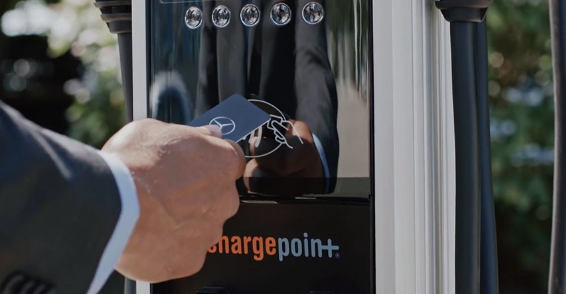
When it comes to charging your electric Mercedes, you have two options: slow charging at home or fast charging at a designated station. Slow charging takes several hours and can get your battery to maximum capacity (100 percent). Fast charging can boost the battery to 80 percent in around 30 minutes. Each type of charge is important for both driver convenience and battery longevity. Read our article to discover the science behind slow charging vs fast charging and when/how to use them to keep your battery in good condition.
Difference Between Slow Charging and Fast Charging
There are two types of electrical current available to charge your EV: alternating current (AC) and direct current. You may recall a notorious feud from physics class about the benefits of one versus the other.
The battery of an EV can only accept DC energy. At-home wall chargers use alternating current and use a standard 120-volt outlet (level 1) or a dedicated circuit with 240 volts (level 2). In order to be compatible with the DC battery, the alternating current must pass through an internal converter before it can charge the battery.
Lower voltage and current conversion means charging will take some time, which is why AC charging units are known as “slow chargers.” When using an AC level 2 home charger, the Mercedes EQS 450 takes about 11 hours and fifteen minutes to reach 100 percent from 10 percent. A level 1 charger may take a day or more.
Fast charging stations, by contrast, have a built-in converter and are thus able to supply the battery with DC energy. These “level 3” chargers also use significantly higher voltage (up to 480 volts). Bypassing the need for internal conversion along with more than triple the voltage results in a much faster charge. Most rapid charging stations can charge an EV to 80 percent in under an hour. The EQS 450 takes just 31 minutes to charge to 80 percent from 10 percent.
Which Type of EV Charging is More Expensive?
Alternating current is the electricity of choice when it comes to most functions. It is more efficient and can be easily stepped up or down to accommodate different voltages. It also experiences far less energy loss over long distances compared to direct current.
For these reasons, AC is usually less expensive than DC. The exact cost to slow charge your vehicle at home will depend on local energy costs.The national average for residential energy costs (AC electricity) is about sixteen cents per kilowatt hour (kWh).
DC fast chargers either charge by the minute or also by kWh. In most cases, these will be more expensive than charging the vehicle at home, but still significantly cheaper than filling a tank with gas.
Why Do Fast Charging Stations Stop at 80 Percent?
Interestingly, fast-charging stations take as long to charge a battery from 80 percent to 100 percent as they do to charge it from 10 percent to 80 percent. In other words, once you reach 80 percent, you will wait another half an hour to top off the rest of the battery. Why is this?
Fast chargers are programmed to revert to alternating current, the “slow charge,” once the battery reaches 80 percent. One reason for this has to do with time and energy conservation. The additional charging time discourages drivers from continuing their charge to 100 percent, which saves the station energy and reduces wait times for other drivers needing to use it.
Another reason is to preserve battery life. EV’s use a lithium ion battery. These batteries perform optimally at a mid-range charge, and they are not designed to handle high voltages for prolonged periods of time. Slow charging for the remainder of the charging time allows the ions within the battery to stabilize, preserving the battery’s integrity and overall health.
Is Fast Charging Bad for Your Electric Vehicle?
No. Fast charging is essential in supporting the use of electric vehicles as practical, long-range modes of transportation. There are several fail-safes in place to keep your battery in good condition.
In addition to the 80 percent cap at fast charging stations, most lithium ion batteries also have a built-in Battery Management System (BMS). These systems monitor the overall battery health including voltage, temperature, and ion balance.
Most experts agree that slow charging is still the best way to charge an EV, since it uses low voltage and allows ample time for ion stabilization. However, using fast chargers occasionally to complete a journey will not have any appreciable effect on battery health.
Free Charging With Mercedes me Charge
Did you know that all Mercedes electric vehicles come with two free years of charging at over 60,000 rapid charging stations across the country? Your Mercedes me Charge app makes it easy to plan your trip, with access to the largest integrated network of charging stations in the country. You can also use your MBUX navigation system to locate the nearest charger. Simply tap the EQ icon on the screen, select “charging stations,” and choose the station you want.


